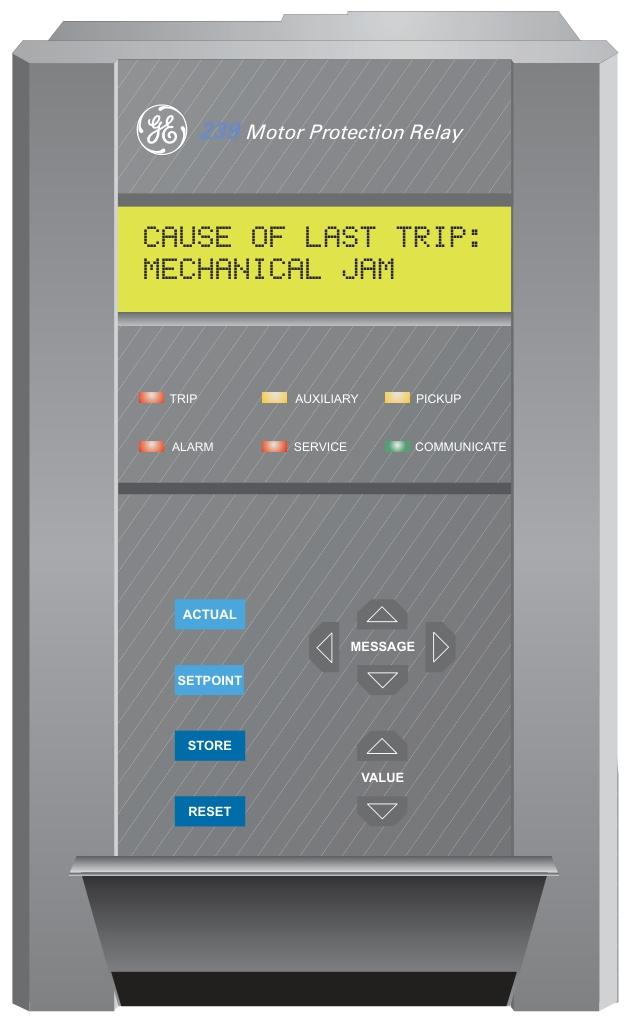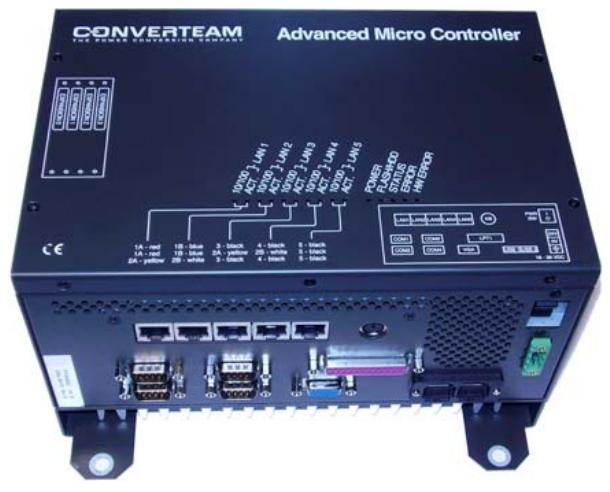ALSTOM N70032702L High Performance Control Module
The ALSTOM N70032702L high-performance control module is a core component developed by ALSTOM for complex industrial control scenarios. It integrates advanced microelectronics technology and intelligent control algorithms, aiming to provide high-precision and high reliability control solutions for fields such as power, rail transit, and industrial automation. As the flagship model of ALSTOM’s industrial control product line, this module achieves collaborative control and real-time monitoring of multiple types of equipment through modular design and open architecture, improving system efficiency while reducing operational complexity.
Product positioning and architecture design
(1) Core positioning
The N70032702L module is positioned as the “nerve center” of industrial automation systems, mainly responsible for three core functions: data processing, logical operations, and equipment control. It adopts a 32-bit high-performance processor, combined with a real-time operating system (RTOS), which can achieve fast response to millisecond level signals and is suitable for key control scenarios that require high real-time performance, such as power grid relay protection, train traction control, and large-scale unit linkage control.
(2) Hardware architecture
Processing Unit: Equipped with an ARM Cortex-A53 processor with a main frequency of 500MHz, integrated with 1MB cache, supporting floating-point operations and digital signal processing (DSP) instruction sets, with a data processing capacity of 200MIPS (millions of instructions per second).
Storage system: Comes standard with 2GB DDR4 memory and 16GB eMMC flash memory, supports external SD card expansion to 128GB, meeting the needs of large data storage and program operation.
Interface configuration:
Communication interface: 4-channel Gigabit Ethernet (supporting IEEE 1588 precise clock synchronization), 2-channel RS-485/RS-32 serial interface, and 1-channel CANopen bus.
Input/output: 16 digital inputs (24V DC), 12 digital outputs (relay/transistor optional), 8 analog inputs (± 10V/4-20mA), 4 analog outputs (4-20mA).
Expansion interface: 2 PCIe Mini slots (supporting PCIe 2.0 x1), 1 USB 3.0 interface.
Power supply design: Supports dual power redundant input (85-264V AC/24-110V DC), built-in UPS backup power supply (maintenance time ≥ 10 minutes), ensuring that critical data is not lost in case of power failure.
(3) Software Architecture
Operating System: Pre installed with QNX Neutrino RTOS, supporting POSIX standards, with real-time performance reaching microsecond level, capable of running over 100 task processes simultaneously.
Development Environment: Provides an Eclipse based integrated development environment (IDE) that supports C/C++and Python programming, and is compatible with importing MATLAB/Simulink models.
Protocol support: Built in industrial communication protocol stacks such as Modbus, OPC UA, IEC 61850, EtherCAT, etc., supporting custom protocol development.
Key performance parameters
Processing performance
Instruction cycle: ≤ 50ns Data throughput: 1.2GB/s
Support multitasking parallel processing, suitable for high-density data acquisition and complex algorithm computation
real-time
Interrupt response time: ≤ 1 μ s Task switching time: ≤ 2 μ s
Satisfy scenarios with high real-time requirements such as power system protection and rail transit signal control
Accuracy control
Analog acquisition accuracy: ± 0.1% Digital synchronization accuracy: ≤ 100ns
Suitable for industrial process control that requires high-precision measurement, such as precision instrument drive and motor vector control
reliability
MTBF (Mean Time Between Failures): ≥ 100000 hours Operating temperature: -40 ℃~+70 ℃ Protection level: IP54 (optional IP65)
Can operate stably in harsh industrial environments, meeting the needs of outdoor, high temperature and other scenarios
anti-interference
Electromagnetic compatibility: compliant with EN 61000-6-2/3 vibration test: 5-2000Hz, 50g acceleration
Resist the effects of electromagnetic interference and mechanical vibration in industrial sites, and ensure the accuracy of data transmission and control instructions
Typical application scenarios
(1) Power system automation
Substation comprehensive automation: As a control unit for the interval layer, it achieves precise control of circuit breakers and isolating switches, supports IEC 61850 standard and GOOSE message transmission, and seamlessly cooperates with protection devices and measurement and control devices. For example, in a 220kV substation, this module can simultaneously process 100+remote signaling signals and 50+remote measurements, control 20+switch devices, and have a response time of ≤ 10ms.
New energy grid connection control: used for real-time monitoring and power regulation of inverters in wind farms and photovoltaic power stations, supporting active/reactive power decoupling control, with a power regulation accuracy of 0.5% of rated power, meeting the grid connection technical requirements of the power grid for new energy stations.
(2) Rail Transit
Train traction control: installed in the traction converter of the high-speed train, it realizes vector control of the traction motor, with a control accuracy of 0.1Hz, supports multiple power supply modes of 1500V DC/25kV AC, and is suitable for different vehicle types such as high-speed rail, subway, and light rail.
Signal system: as an on-board signal processing unit, it interfaces with ATP (automatic train protection) and ATO (automatic train operation) systems to process trackside signal and on-board sensor data, with communication delay ≤ 5ms to ensure traffic safety and punctuality.
(3) Industrial Process Control
Intelligent manufacturing production line: In the automotive welding workshop and electronic component production line, the motion trajectory and process parameters of the robotic arm are controlled, with a positioning accuracy of ± 0.1mm. It supports seamless integration with PLC and SCADA systems to achieve flexible production.
Petrochemical control: used for closed-loop control of reaction kettle temperature and pressure in refineries, supporting complex algorithms such as cascade control and feedforward control, with a control cycle of ≤ 100ms, ensuring that process parameters are stable within the set value ± 0.5% range.
(4) Special equipment control
Aerospace ground equipment: Real time control of high-pressure fuel pumps and cooling systems is achieved at satellite launch sites and aircraft engine test benches, supporting 1553B bus protocol and data transmission error rate ≤ 10 ^ -9.
Military equipment: compatible with shipborne radar servo systems and armored vehicle fire control systems, with wide temperature range and anti vibration characteristics, meeting the reliability requirements of military equipment through GJB 150 environmental testing standards.
Core advantages of the product
(1) High performance and high integration
Multi core heterogeneous processing: Adopting a “CPU+FPGA” architecture, the CPU is responsible for logical operations and protocol processing, while the FPGA achieves high-speed data acquisition and hardware acceleration, resulting in a performance improvement of more than three times compared to traditional single core controllers. For example, in the scenario of fault recording in the power system, 128 analog signals can be collected simultaneously with a sampling rate of 100kHz, and the fault waveform can be stored and analyzed in real time.
Functional density: It integrates the functions of traditional multiple control units within a volume of 200mm × 150mm × 50mm, reducing cabinet space occupation by 30% and lowering system wiring complexity.
(2) Openness and Scalability
Open API: Provides standardized API interfaces and software development kits (SDKs), supporting third-party application development, such as allowing users to customize algorithm modules and embed them into real-time control systems.
Modular Expansion: Specialized function cards such as FPGA acceleration cards and high-speed data acquisition cards can be added through PCIe Mini slots to meet personalized needs. In a case study of a steel enterprise, direct torque control (DTC) of the main motor of the rolling mill was achieved by extending the FPGA card, resulting in a 20% improvement in control performance.
(3) Reliability and safety
Fault tolerance mechanism: Supports hot standby redundancy (1+1 redundancy mode), with a main standby switching time of ≤ 50ms, ensuring uninterrupted control tasks. Built in triple watchdog circuit to prevent program from running away.
Information security: Integrated hardware encryption chip (supporting AES-256 algorithm), realizing data transmission encryption and device identity authentication, complying with IEC 62443 industrial network security standard, defending against network attacks and data tampering.
(4) Usability and low operational costs
Visual debugging: Built in web server, real-time data and configuration parameters can be viewed through a browser, supporting remote debugging and firmware upgrades, reducing on-site maintenance workload.
Predictive maintenance: Real time monitoring of internal temperature, voltage, fan speed and other health status parameters of the module, early warning of potential faults, and reducing equipment maintenance costs by 40% in a subway project application.
Technological innovation points
Mixed signal processing technology: using a 24 bit Δ – ∑ analog-to-digital converter (ADC) combined with digital filtering algorithm, the signal-to-noise ratio of analog signal acquisition is increased to 120dB, suitable for weak signal detection, such as transformer partial discharge monitoring.
Time sensitive network (TSN) support: Integrating TSN protocols such as IEEE 802.1Qbv and IEEE 802.1AS to achieve sub microsecond level network synchronization and meet the real-time communication requirements of the Industrial Internet of Things (IIoT).
Edge computing capability: built-in machine learning inference engine, support lightweight neural network model (such as TensorFlow Lite), can directly process sensor data at the edge side, and reduce cloud data transmission by more than 50%.





